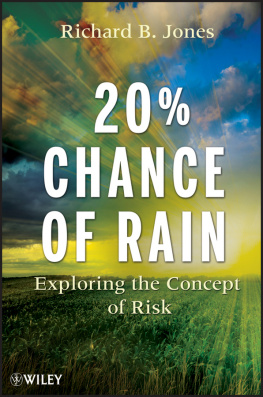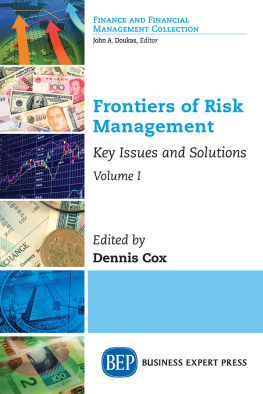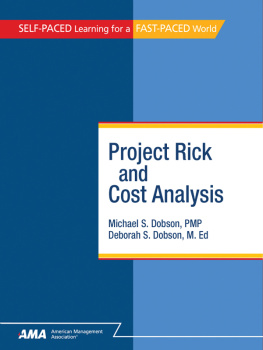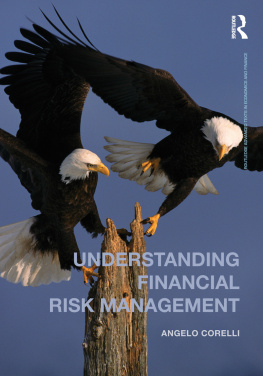Copyright 2012 by John Wiley & Sons, Inc. All rights reserved.
Published by John Wiley & Sons, Inc., Hoboken, New Jersey.
Published simultaneously in Canada.
No part of this publication may be reproduced, stored in a retrieval system, or transmitted in any form or by any means, electronic, mechanical, photocopying, recording, scanning, or otherwise, except as permitted under Section 107 or 108 of the 1976 United States Copyright Act, without either the prior written permission of the Publisher, or authorization through payment of the appropriate per-copy fee to the Copyright Clearance Center, Inc., 222 Rosewood Drive, Danvers, MA 01923, (978) 750-8400, fax (978) 750-4470, or on the web at www.copyright.com. Requests to the Publisher for permission should be addressed to the Permissions Department, John Wiley & Sons, Inc., 111 River Street, Hoboken, NJ 07030, (201) 748-6011, fax (201) 748-6008, or online at http://www.wiley.com/go/permissions.
Limit of Liability/Disclaimer of Warranty: While the publisher and author have used their best efforts in preparing this book, they make no representations or warranties with respect to the accuracy or completeness of the contents of this book and specifically disclaim any implied warranties of merchantability or fitness for a particular purpose. No warranty may be created or extended by sales representatives or written sales materials. The advice and strategies contained herein may not be suitable for your situation. You should consult with a professional where appropriate. Neither the publisher nor author shall be liable for any loss of profit or any other commercial damages, including but not limited to special, incidental, consequential, or other damages.
For general information on our other products and services or for technical support, please contact our Customer Care Department within the United States at (800) 762-2974, outside the United States at (317) 572-3993 or fax (317) 572-4002.
Wiley also publishes its books in a variety of electronic formats. Some content that appears in print may not be available in electronic formats. For more information about Wiley products, visit our web site at www.wiley.com.
Library of Congress Cataloging-in-Publication Data:
Jones, Richard B. (Richard Bradley), 1947
20% chance of rain : exploring the concept of risk / Richard B. Jones.
p. cm.
Includes index.
ISBN 978-0-470-59241-0 (pbk.)
1. Risk assessment. I. Title. II. Title: Twenty percent chance of rain.
T10.68.J66 2012
302'.12dc23
2011015220
oBook ISBN: 978-1-118-11637-1
ePDF ISBN: 978-1-118-11634-0
ePub ISBN: 978-1-118-11636-4
MOBI ISBN: 978-1-118-11635-7
Dedicated to the memory of Professor Carl Evans,
teacher and mathematician
Preface
Life is full of surprises. Some are good and some are not. As we travel through the time of our lives, we naturally develop tactics to deal with its joys and sorrows. From looking at the news media, a person could conclude that science, technology, and information are our personal saviors, prolonging our lives, protecting us from the behaviors of others, and even shielding us from the consequences of our personal actions. Theres no doubt that the powers of the internet and the new information age have broadened our horizons. But technology has done little to change or alter what comes into view. The question is: How can each of us best avoid some of lifes pitfalls and prepare to deal with those that penetrate our defenses?
There is no one size fits all tactic or recipe that works. Just as each of us is unique, so are our ethics, beliefs, aversions, and tolerances. The ways in which people deal with uncertainty seem simple on the surface, yet are extremely complex.
My motivation for this work was to write a book about risk that could be used as a supplement to a wide variety of risk-related courses and be interesting enough to be read as a standalone book. Risk is usually discussed in relation to a specific subject, such as environmental risk, transportation risk, health risk, food risk, and weather risk. The concept is blended with other subjects to inform or teach risk applications in specific areas. But risk is a subject all by itself. It permeates every part of our lives as a universal variable of human existence, transcending any specific application. This book provides a framework for you to apply to risk in both your professional and personal lives. Each chapter describes applied methods on how to analyze, assess, and manage risk. Together they give you tools to help you pack your personal and professional parachutes for some situations in which you need strategies to deal with unexpected events.
The information for this book came from various international organizations, books, journals, government reports, and newspaper articles. Much of the content is related to risk exposures discussed from the United States perspective simply because these data sources are readily available. For readers in other parts of the world, the same methodologies are applicable to you by accessing your countrys data sources, which should be similar to the ones used here. When possible, however, international data and examples are directly used to help readers around the world apply the principles discussed in the text. The international examples also help to show the great diversity in risk exposures and that there is a great deal of work that needs to be donenot all of it, by the way, in the developing world countries. After reading this book, youll probably be able to identify additional news items that would either add to or fit into the chapters.
The title of this book came from a conversation with a gift store clerk at Sapphire Beach on St. Thomas. While vacationing there with my family, I noticed a weather report showing that a cold front was expected to pass over the region the next day. Since wed planned to spend that day in a boat, I asked the clerk exactly what I should expect. She smiled and said, Oh, theres a 20% chance of rain tomorrow. Since two young children were involved, I pursued the issue a little further. And what does that usually mean? I asked. She laughed and told me. Dont worry. Thats what they say every day. Maybe it will rain, and it maybe wont. In St. Thomas, theres always a 20% chance of rain. I was left speechlessfor this simple response captured the essential element of the manuscript I was writing. Science really can make life appear more predictable, but its never going to replace our common sense. I hope you agree.
RICHARD B. JONES
Acknowledgments
First and foremost, I would like to thank Janice Jones, who helped make this book a reality. Her technical insight, encouragement, patience, support, professional editorial expertise, and overall attention to detail were invaluable throughout the development and writing of this book.
My special thanks to the international law firm of Greenberg Traurig, LLP, for providing valuable referencing and data resources. In particular, I am indebted to two Houston office attorneys: Dwayne Mason, for many interesting risk and law discussions, and Alex Nowamooz, who was instrumental in helping me find and condense several of the chapter case studies.
I also would like to acknowledge the support and encouragement of many colleagues and friends. To attempt to name these wonderful people means I accept the risk of inadvertently omitting someone. This is a risk exposure I choose to eliminate by saying to everyone (and you know who you are!) THANK YOU.
R.B.J.
Chapter 1
Risk: Lifes Question Mark
We also believe in taking risks, because thats how you move things along







